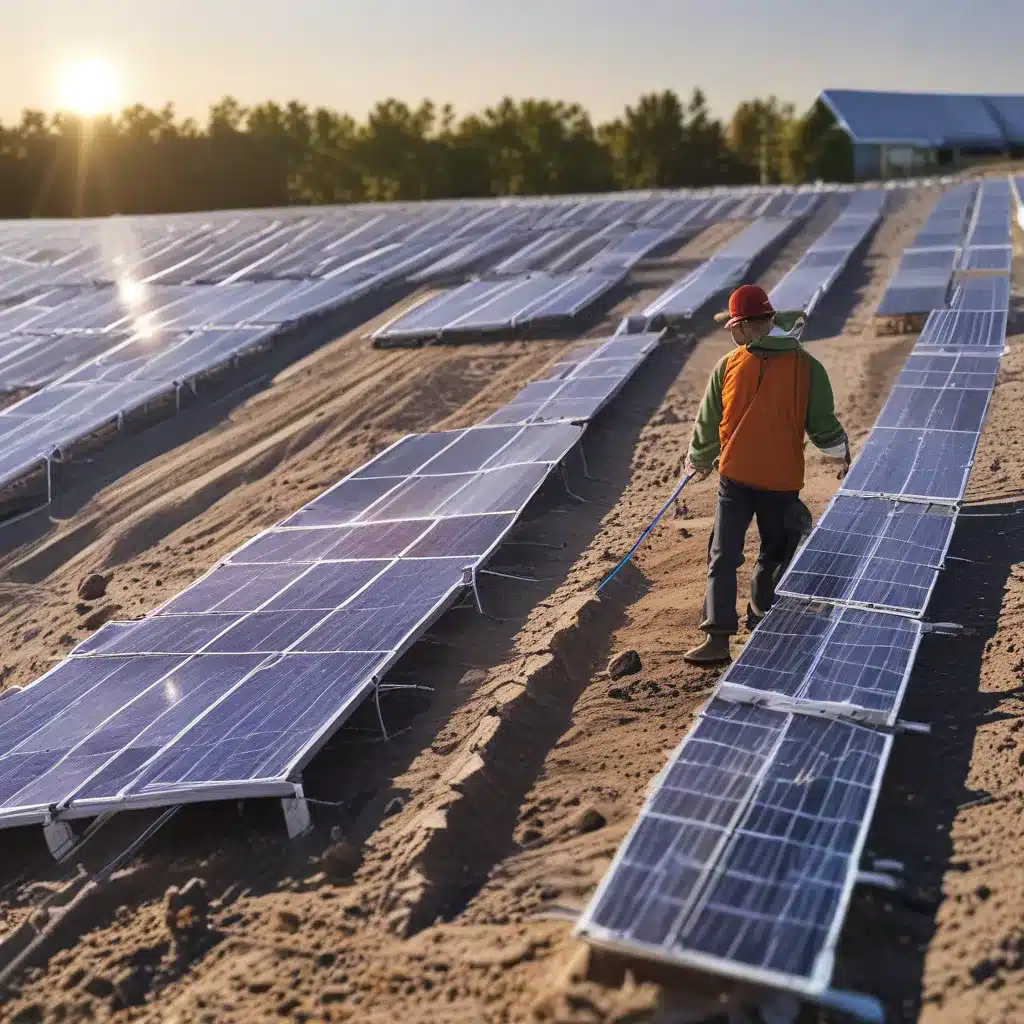
Navigating the Complex World of Solar Grid Connection
As the demand for renewable energy solutions continues to skyrocket, the solar industry is facing a new and daunting challenge: interconnection. Connecting solar energy systems to the electrical grid has become a bottleneck, slowing down the adoption of this clean, sustainable power source. But fear not, my friends – I’m here to guide you through the tangled web of solar interconnection issues and show you how we can overcome these growing pains.
The Interconnection Quagmire
Let’s start with the facts. In 2018, Michigan’s two major utilities saw an explosion in requests for grid interconnection – we’re talking about a jump from just over 100 megawatts of total operating solar generation to a whopping 3 gigawatts in the queue. That’s a staggering increase, and it left the state’s interconnection rules, which hadn’t been updated since 2009, struggling to keep up.
But Michigan isn’t alone in this predicament. Across the country, utilities and grid operators are facing significant challenges in accommodating the surge of distributed energy resources (DERs) like solar, wind, and energy storage. It’s like trying to fit a square peg into a round hole – the existing rules and regulations just aren’t designed to handle this level of distributed energy integration.
Enter the Interconnection Experts
That’s where the interconnection gurus come in. In 2019, the Michigan Public Service Commission (MPSC) turned to the National Renewable Energy Laboratory (NREL) for help, and boy, did they deliver. Enter Michael Ingram and David Narang, two NREL engineers who have been leading the charge in solving these complex interconnection challenges.
Ingram and Narang didn’t just swoop in and wave a magic wand; they rolled up their sleeves and got to work. First, they helped the MPSC staff understand the technical requirements of DERs based on the IEEE Standard 1547-2018. This standard provides the technical specifications and configurations needed to safely integrate DERs into the grid.
But that was just the first step. The second objective was to assist Michigan’s utilities in evaluating the pre-application reports that contain critical information about their distribution systems, such as feeder locations and voltages. This data is essential for determining how new DERs will impact the grid.
“It was new for the utilities to think about and share that information with project developers,” Ingram explained. “But we showed them that several other states already had this practice in place.”
Putting the Pieces Together
With Ingram and Narang’s expertise, the MPSC has been working tirelessly throughout 2020 to update their interconnection rules through a collaborative stakeholder process. And it’s not just Michigan – these interconnection gurus have been sharing their knowledge globally, educating others on the intricacies of the IEEE 1547 standard and helping utilities and grid operators around the world navigate this complex landscape.
But their work doesn’t stop there. Ingram and Narang have also contributed to NREL’s new Guide for Authorities Governing Interconnection, which is currently under review at the U.S. Department of Energy. This guide is designed to be a comprehensive resource for anyone tasked with managing the interconnection of DERs to the grid.
Overcoming the Challenges
Now, I know what you’re thinking: “Solving solar interconnection issues? That sounds like a daunting task!” And you’d be right. But with experts like Ingram and Narang leading the way, there’s hope on the horizon.
One of the key strategies they’ve employed is using the state of Minnesota’s experience with developing their DER interconnection process as a reference point for updating the Michigan rules. By learning from the successes (and failures) of other states, they’re able to create more robust and effective interconnection guidelines that can be tailored to each unique grid system.
Another crucial aspect of their work is the emphasis on communication and collaboration. Ingram and Narang have fostered strong relationships with utilities, grid operators, and regulatory bodies, ensuring that everyone is on the same page and working towards a common goal.
The Future of Solar Interconnection
So, what does the future hold for solar interconnection? Well, my friends, if the work of Ingram, Narang, and their colleagues at NREL is any indication, the outlook is bright. With their dedication to solving these complex challenges and their commitment to sharing their knowledge, the solar industry is poised to overcome the interconnection hurdles and unlock the full potential of this renewable energy powerhouse.
And you know what they say, “A rising tide lifts all boats.” As Solar A Systems Inc. continues to lead the way in providing innovative solar energy solutions, we’re excited to be a part of this interconnection revolution. By working closely with experts like Ingram and Narang, we’re confident that we can navigate the complexities of grid connection and help our customers harness the power of the sun.
So, the next time you find yourself wondering how to solve those pesky solar interconnection issues, remember the words of the interconnection gurus: “We were teaching them to fish.” And with that, let’s cast our lines and reel in the clean energy future we all deserve.


